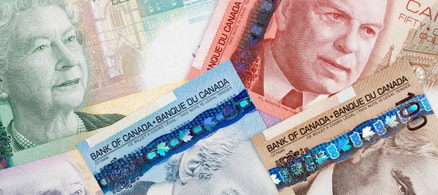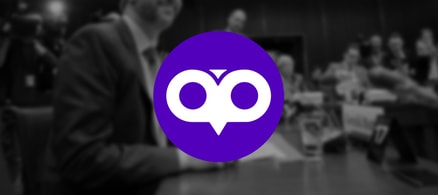Let’s face it, if you’re saddled with mounting credit-card debt, your precious rewards points won’t mean diddly-squat.
The longer it takes to pay off your balance, the more interest you’ll accumulate. The more interest you accumulate, the longer it takes to pay off your balance. It’s a vicious cycle that could wind up costing you a lot.
This guide will show you how to offload your credit-card debt faster and save yourself hundreds — possibly thousands — in interest.
The danger of minimum payments
More than 40% of Canadians have a credit-card spending limit of $10,000 or higher. And while a high limit might seem like a good thing — you can afford that fancy vacuum cleaner — it can also lead to a false sense of flexibility when it comes to your money.
A lot of credit-card users make the dangerous mistake of spending beyond their means just because they can. They figure, “Hey, my minimum monthly payment is low, I can manage 50 bucks a month, no problem.”
But making minimum payments is a slippery slope. If it becomes a habit, it could add years to the length of time it will take to clear your debt — not to mention mountains of interest.
For example, if you owed $2,000 on a card with a 20% interest rate, and only made the minimum payment of 3%, it would take you 12 years and eight months to pay off your debt. You’d pay $2,111 in interest, more than your entire balance.
On the other hand, if you were to pony up 10% of your balance each month, you could cover your debt in three years and four months, and you’d only pay $385 in interest. That’s quite a difference.
Maximize Your Tax Refund with TurboTax Canada!
Simplify tax season with this user-friendly software. Get step-by-step guidance, maximize deductions, and file with confidence. Trusted by millions, TurboTax Canada ensures accuracy and peace of mind. Start your taxes today and get the refund you deserve
Get the tax refund you deservePay off your debt sooner with these tools
Even if paying more than the monthly minimum doesn’t seem doable with your current financial situation, there are steps you can take to make it work.
Here are some tools that may help:
Debt consolidation loan
A debt consolidation loan is a personal loan with a low, fixed interest rate. You can use it to pay off your credit-card balance and any other outstanding debts immediately, and then you’ll only have one bill to worry about each month.
Payback periods for personal debt consolidation loans are set, often ranging from one to five years. So unlike your credit card, you’ll have a specific end date for your debt — assuming you make all your payments, of course.
In order for a debt consolidation loan to be worth it, you’ll need to make sure your credit score is high enough to qualify for a decent interest rate. If you’re not sure what your credit score is, you can find a number of resources online to check it for free.
Balance transfer credit card
Another option is to move your debt over to a balance transfer credit card with a more manageable interest rate — some even offer an introductory rate of 0% for a limited time.
Similar to a personal loan, a balance transfer credit card will give you a predetermined time frame to pay off your debt in fixed installments, and you won’t need to worry about sky-high interest charges.
Just make sure that the balance transfer fees — usually around 3% — don’t outweigh the amount you’ll be saving in interest.
As with a debt consolidation loan, whether you qualify for a balance transfer credit card depends on your credit score. So if your credit rating isn’t great, you may not be eligible.
Debt management
If your credit score is too low for either of the options above, you might want to consider recruiting the help of a debt-management company.
A debt-management company will work with your creditors to reduce your monthly payment and interest rate. They’ll work out a more affordable payment schedule that will give you a few years to pay off your debt.
Be warned, though: Not all debt-management companies are created equal. Some charge fees for their services and may end up being more trouble than they’re worth. Do a bit of research online and look for a debt-management company that’s non-profit and is accredited by a reputable organization.
Options you should only use as a last resort
Although paying off your balance quickly is the key to conquering credit-card debt, you should try to avoid certain methods.
The following strategies should only be used as a last resort — and even then, probably not at all.
Taking out a home equity loan
A home-equity loan lets you use your house as collateral for a loan with a low interest rate; it’s basically like taking out a second mortgage.
And while a home-equity loan might help you pay off your credit-card balance, you’ll be turning an unsecured debt (one that doesn’t require collateral) into a secured debt (one that does). That means if you fail to make your payments, your lender could potentially foreclose on your house. Yikes.
If you’re planning to take out a home-equity loan, you need to be absolutely sure you can afford the monthly payments. Otherwise, you’ll just be trading a bad problem for one that’s even worse.
More: HELOC vs. Home Equity Loan
Withdrawing from your RRSP
If you’ve got money stashed away for your retirement in an RRSP, you might be tempted to take some of it out to help cover your credit-card debt.
But by cashing in on your RRSPs, you’ll be subject to a hefty withholding tax: 10% on withdrawals under $5,000, 20% on withdrawals between $5,000 and $15,000, and 30% on anything higher than $15,000.
That means if your credit card debt is $10,000, you’ll need to take out $12,000 to pay it off. You’ll also be required to report the money you withdraw as taxable income, so it may end up costing you even more come tax season.
Worst of all, you won’t be able to re-contribute the funds you withdraw, so you’ll miss out on years (possibly decades) worth of interest that money would have accumulated leading up to your retirement.
Filing a consumer proposal
A consumer proposal is an arrangement between you and your creditors, negotiated by a Licensed Insolvency Trustee, that lets you extend the time you have to pay off your debt, pay a smaller percentage of what you owe, or a combination of both.
Sounds great, right? Well, it comes at a fairly steep cost to your credit.
Credit bureaus use a scale of R1 to R9 to assess your trustworthiness for revolving or recurring credit like credit cards. After filing a consumer proposal, your credit rating will show up as an R9: the worst rating possible.
Once your new debt is paid off, your rating will get bumped up to R7 for three years. But while you’re in the thick of it, you likely won’t be able to get any additional credit, including a car loan or a mortgage.
So if you have plans to make any big purchases in the near future, filing a consumer proposal might make it tough.
Declaring personal bankruptcy
It’s true that declaring personal bankruptcy will eliminate most of your debts, but — and this is a huge but — you’ll also be required to surrender your major assets. That means forking over things like your car, your investments, your RRSP contributions and possibly even your house.
On top of that, your credit rating will drop as low as it can go (R9), and it’ll stay there for six to seven years.
During that time you’ll essentially be persona non grata to lenders, and your poor credit could have a ripple effect through many aspects of your life. You likely won’t be able to buy a house or get a car loan, and any money you had saved for retirement will be wiped out.
In short, don’t file for bankruptcy to pay off your credit-card debt unless you have no other options.
Grow Your Savings Effortlessly with Moka
Automate your savings with every purchase and watch your money multiply. Moka rounds up your transactions and invests the spare change. Start building wealth effortlessly today. Join thousands of Canadians embracing financial freedom with Moka
Sign up nowYou’ve paid off your credit card debt. Now what?
Once you’ve managed to fully pay off your credit-card balance and become debt free, there’s an important thing you should do — or rather, not do. Do not close your account.
You might be tempted to just cut up your card and be done with it, but closing a credit-card account could negatively affect your credit rating.
Plus, keeping your credit card active helps to boost your credit score; it extends the length and history of your credit and increases your credit capacity.
It also reduces your credit utilization ratio — the amount of credit you’re using divided by the amount you have available — which is crucial for maintaining a high credit score.
So you may want to hold on to that credit card. You can still use it, if you’d like. Just remember: Repay your balance. Every. Single. Month.
Sponsored
Trade Smarter, Today
With CIBC Investor's Edge, kick-start your portfolio with 100 free trades and up to $4,500 cash back.







